Direct comparisons with the beat up old par-can lighting we currently use demonstrates that the 64 LED Pro nowhere near matches the light output and beam focus of a traditional 300 watt medium flood incandescent stage light.
I want to do a fair test, so first here is the test area (one of the school computer labs) which is a fairly long space:
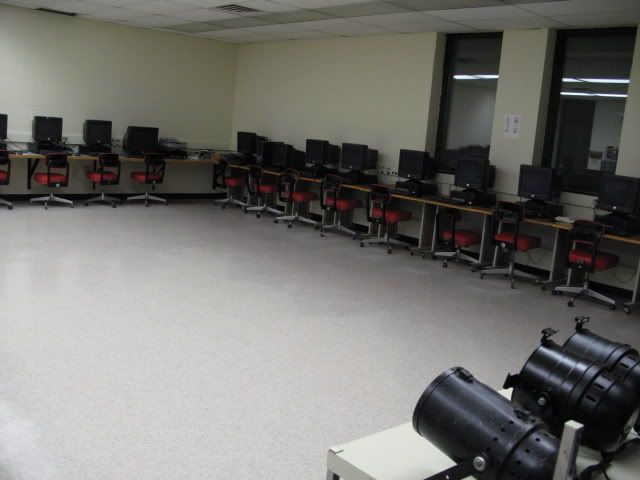
And here is the equipment being tested, two brand new 64B LED Pro, and a really beat up old PAR-can containing a GE 300watt medium flood incandescent lamp:
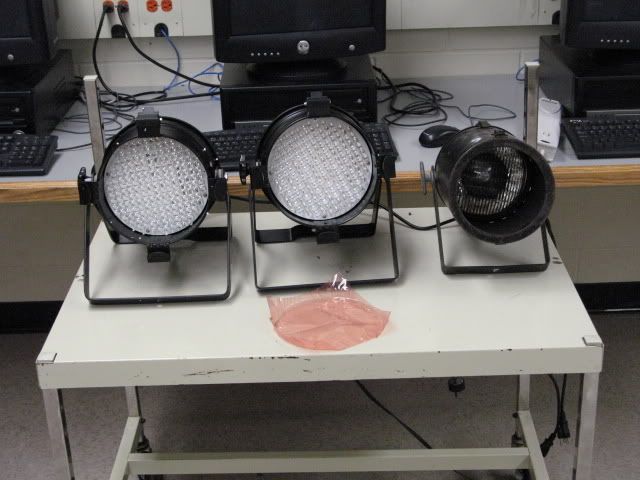
Here is the far wall, with the room lights on, where we will be doing the comparisons:

So, first we will use a single 64B LED Pro in the dark. It looks okay but this isn't a good test since the camera is auto-adjusting exposure.
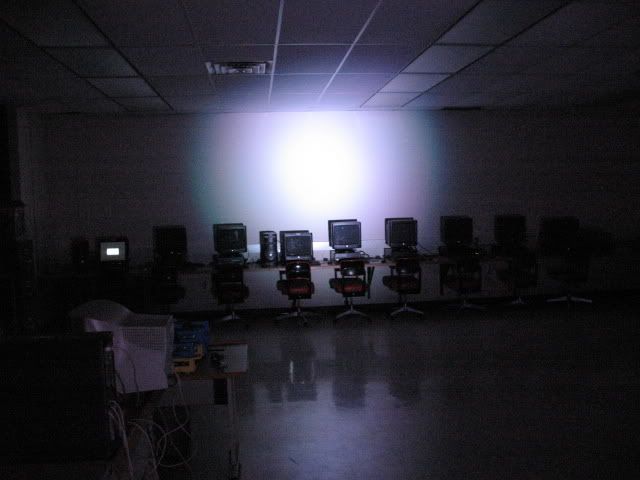
We need to directly compare it to the incandescent flood, and... oh dear.. this is not good. The flood has a very wide beam due to the filament shape, but the overall intensity far outstrips the output of the 64B LED Pro. The camera is adjusting its white balance to match the brighter light source, which reveals the LED output to be very blue in comparison:
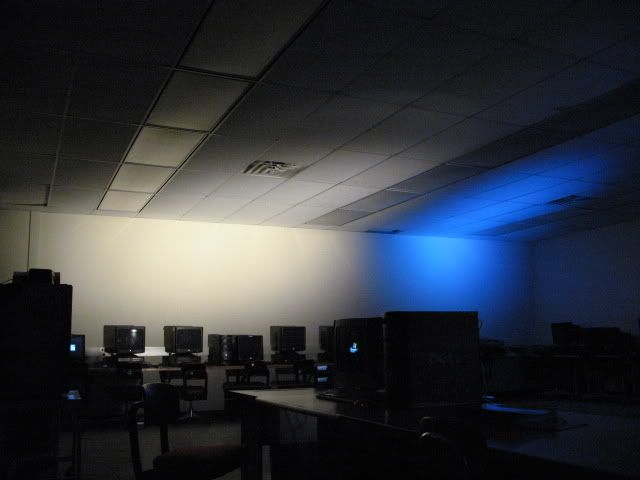
Well, what happens if we turn on the second 64B LED Pro and shine them side by side to match the incandescent spot size? This still doesn't really match the incandescent flood output:

It appears I may need up to four times as many LED Pro 64, to match just one of the old 300watt lamps. Since we currently already have 24 300 watt lamps, I will end up with a sea of 96 of these just to get to the same light output level. At the full retail price of $400, that is $38,400 worth of 64B LED Pro's -- um, I don't think we can afford that.
It is unfortunate but it appears LED technology is still not ready to take the place of the old high-wattage par fixtures.
-----------------------
It looks to me like part of the problem is that the LED Pro does not focus its light output well enough. There is a significant amount of light being dimly cast in a large halo around the fixture, which is more apparent if I direct the beam towards the ceiling:
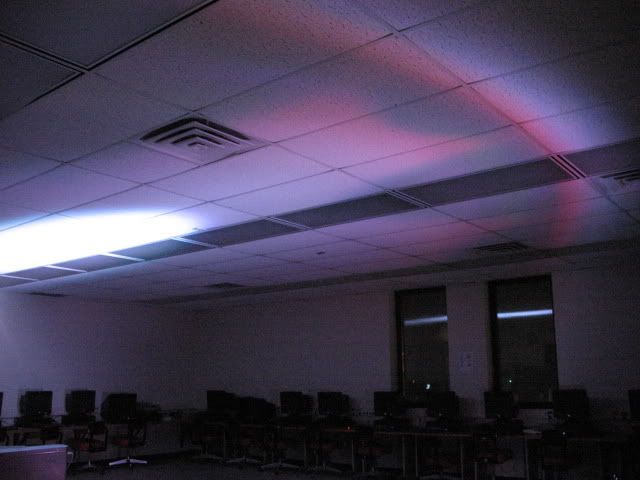
The incandescent does not exhibit this same fringe scattering, and all light seems directed towards the front. What illumination that is visible appears to be backscatter from the main beam spot on the wall:
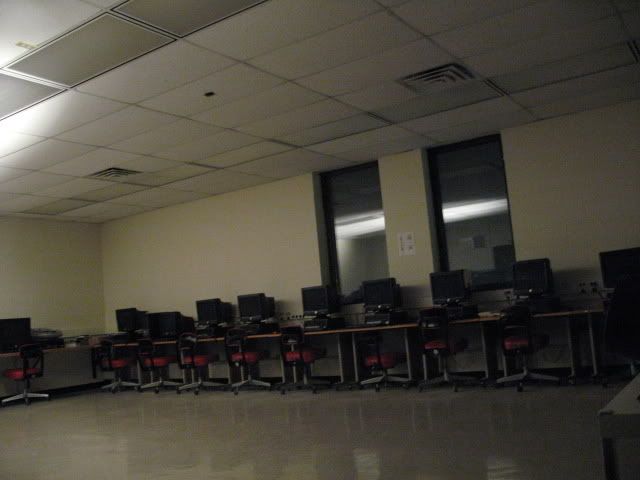
To test this scatter theory, here I am standing in front of the 64B LED Pro to see how much of a shadow I can cast on the wall. If what I am seeing is only backscatter then I won't cast a shadow, but alas there is a very sharp shadow visible:
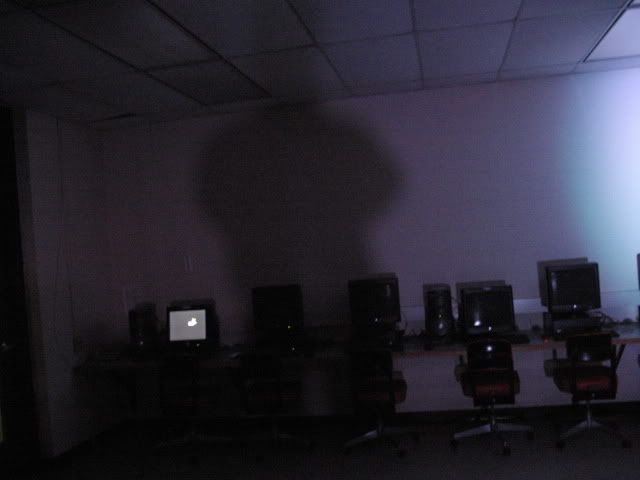
Repeating this test with the 300watt medium flood, there is almost nothing for a shadow unless I get very close to the beam spot, showing this is mostly backscatter:
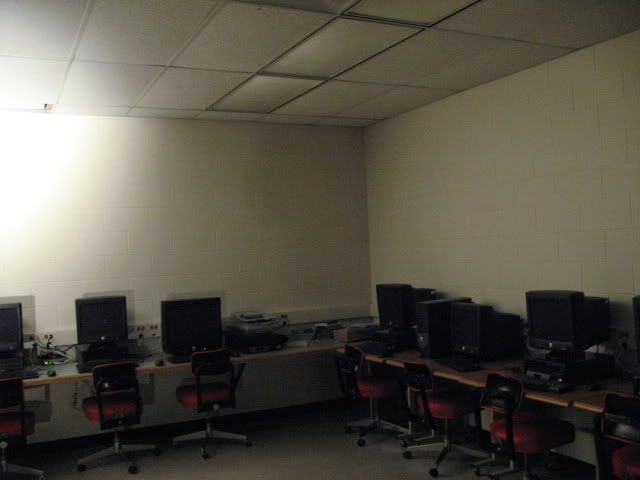
For some reason, due to the shape of the LEDs, the light output is dim in most of the side field, but then suddenly intensifies with sharp points of light at approximately 70 degrees to the side of the beam.
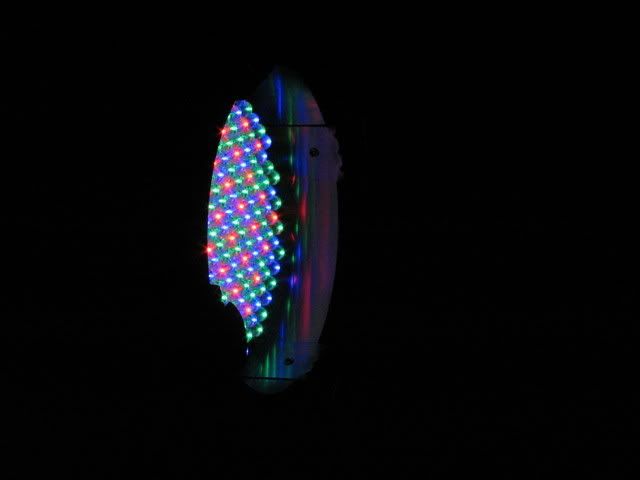
- Dale